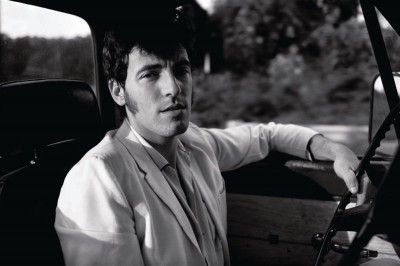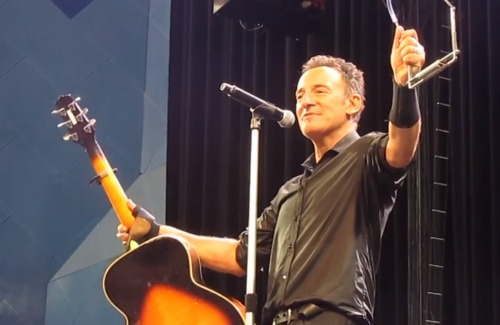
by Michael Goldberg
Bruce Springsteen has always written about the past, and as I’ve spent time with The Ties That Bind: The River Sessions, a multi-CD/multi-DVD set that focuses on music Springsteen made during sessions for The River (and includes a fantastic live show from November 1980, three weeks after The River was released), I’ve been reminded of how a yearning for the past (the high drama of youth) was so much a part of Springsteen’s Seventies recordings.
At age 23, on his first album, Greetings from Asbury Park, Springsteen was already looking back on songs such as “Growing Up’ and “It’s Hard To Be a Saint in the City.” Even on their release, Born to Run, Darkness at the Edge of Town and The River came across as romantic exaggerations of a time long gone. This wasn’t just due to the lyrics, which sometimes referred to events in the past tense.
Watch Springsteen and band do “Out In The Street” in Tempe, Arizona, 1980:
The sound of Springsteen’s music leaped back past the innovations of mid-to-late ’60s rock, a period that prominently included long-haired psychedelia complete with feedback, distortion and wah-wah pedal effects, to draw on Phil Spector’s Wall-of-Sound, the rhythm and blues of The Coasters, Sam & Dave and others, and party-rock hit-makers like Mitch Ryder and the Detroit Wheels and Gary U.S. Bonds.
Watch Springsteen and band do “The River” in Tempe, Arizona, 1980:
Consider that in 1975, when Born to Run was released, including a saxophone in the lineup was akin to using a horse and buggy for transportation. Springsteen’s E Street Band, of course, proudly featured the great Clarence “Big Man” Clemons on sax, and the Big Man took a solo in practically every song.
Even when Springsteen wrote in the present, as he did for “Thunder Road,” his line about “Roy Orbison singing to the lonely” placed the time period of the action in the early/mid-‘60s …
Read the rest of this column at Addicted To Noise.
Watch Springsteen and band do “Thunder Road” in 1975:
– A Days of the Crazy-Wild blog post –

